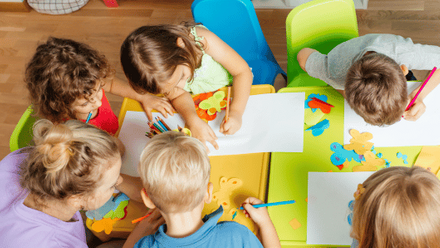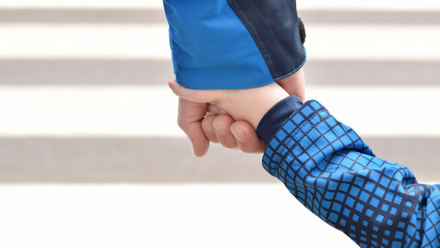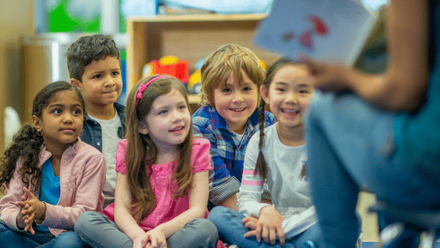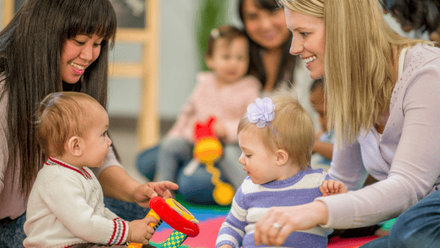How to encourage parents and carers involvement in physical activity
From tummy time to tunnels and trikes, physical activity in the formative years of life paves the way to a future of healthy attitudes and active lifestyles. Being physically active throughout our lives has an immediate and extensive impact on our wellbeing, which is why building the foundations of a healthy and positive mindset regarding exercise is something we must establish in a child’s early years.
For adults, any activity that raises heart rate and makes you breathe faster is considered to be beneficial for your health. But, for young children, activities of any intensity should be encouraged to sustain healthy development throughout childhood. Early education and care professionals know well how important it is to allow children to move while they are in settings. In order to provide a safe and fulfilling environment for physical activity, pay close attention to current physical activity guidelines to sustain best practice.
But children spend most of their time in the home learning environment – the space at home with those they live with is shown to have the greatest impact on a child’s social and cognitive development… but what about their physical health?
We are going to explore physical activity at home and what it means for young children, whilst offering some ways to overcome barriers for those who might not be able to access outdoor spaces as easily as others.
Physical activity in daily life
Physical activity is intrinsic to our every day, from the moment we get up to the moment we fall asleep. For young children, developing positive attitudes to physical activity and encouraging a wide range of movements is not only important for the initial physical development and for reaching milestones throughout their early years, but also for establishing forward-looking attitudes towards being active throughout life.
Involving those at home in encouraging physical movement is a key part of providing a consistently positive and engaging approach to keeping fit. Parents and carers are one of the first role-models that children hold so they also play a central part in ensuring children see active lifestyles throughout their experiences at home.
But for some children accessing opportunities for physical activity can be more challenging for a variety of reasons. When looking at how we can encourage parents and carers to engage their children in a more active lifestyle, it’s important to acknowledge these barriers and treat every family’s needs with the individuality they deserve.
Supporting all families
Children whose parents and carers can’t participate
Young children love to play with the adults in their lives, whether it’s a turn-taking game with grandparents or helping their key person at nursery with the register. It makes sense then that physically active children are often looking for grown-ups to participate in their more dynamic play, running around after them and getting stuck in with all the physical movement they do.
For some parents and carers, this kind of play is more challenging than for others. Parents and carers with disabilities may struggle to participate in varying degrees of physical activity with their children and, for young children needing additional physical support (such as being held on a climbing frame), this can pose risks to opportunity for experiencing a wide range of physical engagement.
- Think about the ways physical activity can be promoted in games that involve parents and carers in a less active role. This might include sending home game ideas where the adult is more instructive, such as ‘what’s the time Mr Wolf?’ or ‘Simon Says’ with older children.
Children who live in an area without a garden
Other children might be limited by a lack of physical access to outdoor areas. Indoor spaces provide some level of physical movement but getting outdoors and having an extended space to run around in goes a long way to developing the kind of intense activity that gets our hearts pumping faster. Children with free flow access to a garden are more likely to utilise it on an ad-hoc basis, whereas time outdoors needs to be planned for those living without open spaces themselves.
- Support parents and carers by sharing information about local spaces to explore, such as natural walks and community events, as well as their local playgrounds. This gives children the experience of variety in their outdoor spaces, allowing them to become more physically active in a variety of terrains and activities.
- Encourage modifying outdoor activities to an indoor setting. This might mean moving the coffee table out of the way to give greater access to an open space but can be beneficial for tiny bodies to get moving.
Children who are physically disabled themselves
Physical activity has massive benefits for all, including those with special educational needs and disabilities. However, accessing physical environments for getting active, or being active for longer periods of time, can be more difficult if additional support is required by the children themselves.
- Provide information and demonstrate how physical activity can be adapted to suit the needs of the child, ensuring they can participate in elements of the exercise, if not all of it. This not only allows parents and carers to see how inclusion is created within the early education and care environment but also provides practical ways to increase participation at home. Make sure you communicate ways that have been particularly successful or less enjoyable during time in setting to convey a sense of consistency and continue to best support the child’s physical development and wellbeing.
Providing an enriching physical environment for children throughout their early years is pivotal to creating a springboard into a child’s future relationship with exercise and assigning strong value to their physical health throughout their life. Parents and carers hold a special role in supporting the physical activity and importance of getting moving at home, as well as in setting. But, for some families, this can pose greater challenges and additional barriers that must be considered to provide an equitable and safe environment for everyone to get active.






